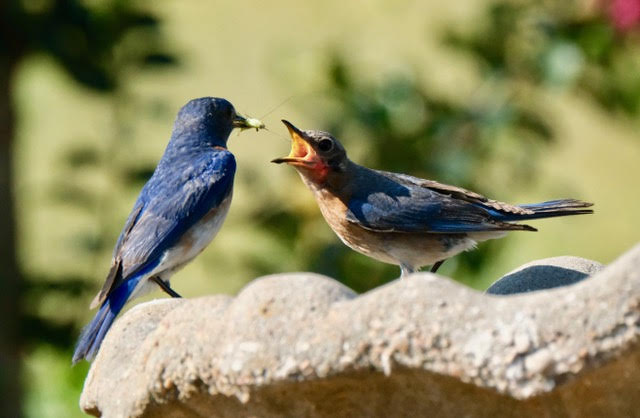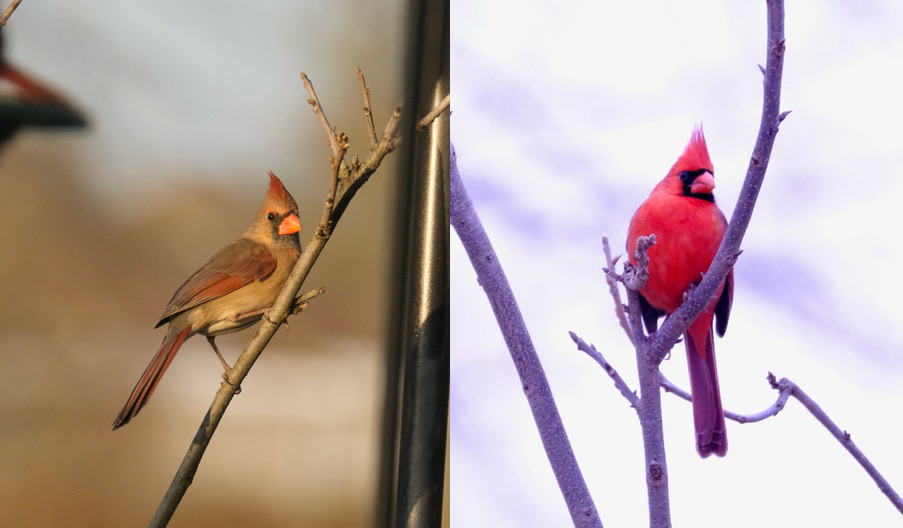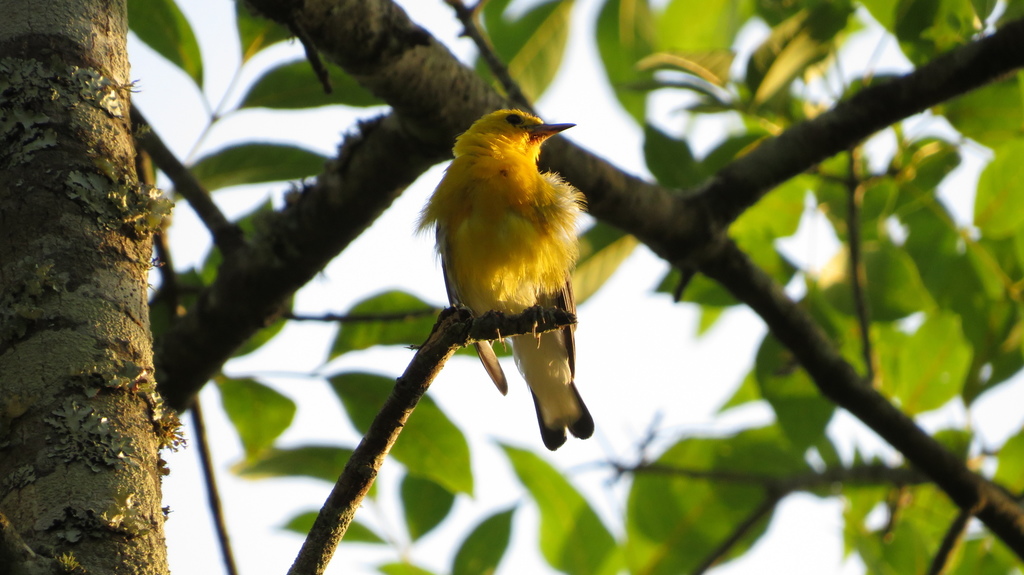East Texas is heralded as a birdwatching hotspot for bird lovers, ornithologists, and of course, the thousands of birds traveling the region’s diverse habitats during annual migrations. Notable species — the cardinal, the red-headed woodpecker, and yellow-bellied Sapsucker, to name a few — are among 43 varieties that call East Texas home year-round.

Pit stops at East Texas conservation areas

East Texas boasts a concentration of birds thanks to its position straddling two fly zones stretching from northern Canada south to the Gulf of Mexico and onto points in Central and South America.
East Texas is one of the most important pit stops along the Central and Mississippi Flyways in North America, especially when migrating north. Although most of Texas falls within the Central Flyway, a small slice of East Texas is often included in the Mississippi Flyway. Its western boundary follows the mighty river north to its source.
“When they’re starting their migratory paths in spring, they have to fly across the Gulf of Mexico. They generally have a really long, a really hard, strong wind in their face so when they get to Texas, they stop over and feed,” said Jessica Coleman, a biology lecturer at The University of Texas at Tyler.

While some birds continue farther north, some remain for the duration of the season, giving birdwatchers the opportunity to see a wide range of species. Coleman said some Southeast Texas areas are so popular, birdwatchers have to reserve accommodations months in advance.
For the birds, East Texas offers plenty of trees for roosting, food sources and water.
Three national wildlife refuges — Caddo Lake, the Neches River, and the Trinity River — — offer over 45,000 acres of bottomland hardwood forest, wetlands and pine upland habitats. These areas are specially managed to support migratory waterfowl and other neotropical species under the management of the United States Fish and Wildlife Service.
The Big Thicket National Preserve near Beaumont offers 84,550 acres of some of the most biologically diverse habitats in North America. Closer to Tyler, the Mineola Nature Preserve, Lake Bob Sandlin, Old Sabine Bottom Wildlife Management Area, Toledo Bend Reservoir and Lake Palestine add thousands more acres of habitat. Closer still, there is Tyler State Park, Lake Tyler, Camp Tyler and Bellwood Lake.
Birdwatching paradise

Bird lovers tend to flock together throughout East Texas to enjoy finding and photographing different species. They also track migrating patterns, provide numbers and document possible environmental effects on bird populations.
An unusually tough winter storm in February 2021 took its toll on the birds, Coleman said.
“We haven’t had that bad of a storm in a long time,” she said. “Eastern Bluebirds took a pretty big hit in our area. We’re just now starting to see them back again, but their numbers definitely went down.”
Habitat loss also poses a great risk for birds, especially to migratory species that depend on forested areas.
“They rely on forested areas in their southern overwintering grounds for food, but when these are removed and replaced by agricultural landscapes, it hinders their ability to prepare properly for the migration,” Coleman said.
For example, she said, populations of cerulean and golden-winged warblers are declining due to the habitat lost in South America.

“These species spend less than half their time in North America in their breeding grounds. Most of their life is spent at stopover sites or wintering sites in the neotropics,” Coleman explained. “Unfortunately … there in the tropics … we see some of the greatest levels of deforestation. That loss affects those migratory birds we see here during spring migration.”
Coleman said the growth of human habitats also is affecting birds.
“We are losing habitat at an alarming rate and a lot of that is because as humans grow, we need space,” she said.
That’s where bird lovers can play a key role in preserving the bird population by finding ways to protect habitats and creating and maintaining new ones, she said. Coleman emphasized the importance of organizations dedicated to this cause.
“There are a lot of societies out there that do help to promote the preservation of those critical habitats,” she said. The Neches River National Wildlife Refuge located between Jacksonville and Palestine is one example.
“There’s a friends group … that help with trying to protect that refuge area,” Coleman said. “That refuge isn’t that old … It’s only been open to the public within the last three or four years and they’re still acquiring land.”

Since 1951, the Tyler chapter of the Audubon Society has been working to protect birds in Northeast Texas. Although a small group, the 25 current members organize field trips, participate in annual nationwide bird counts and conduct public meetings every second Tuesday at Pollard United Methodist Church in Tyler.
Outdoor activities include monthly field trips to public lands in the spring and fall and weekly walks at Tyler State Park. This April, members plan to take a trip to Millwood State Park across the Arkansas border.
Annual bird counts, such as the Christmas Bird Count conducted yearly from mid December to early January, are a way society members can coordinate with other bird lovers across North America. Trained volunteers fan out along predetermined routes — usually a 15-mile radius of specified locations — counting and photographing all birds seen and heard. After that information is collected, the data is sent to the National Audubon Society and merged with international population estimates.
During the most recent Christmas Bird Count, groups surveyed in Tyler, Longview, Lake O’ the Pines, Lake Tawakoni, Texarkana and Paris, said member Ann Bush.

Other counts include the Big Global Day, the Backyard Bird count, The Big Sit and festivals across the nation. Additionally, citizen scientists keeping track of birds use university databases iNaturalist and, ebird to bolster these efforts, she said.
“All the information from these counts are sent to the university or non-profit that organizes the count to collect and analyze data to learn of trends or warn us of future extinctions. The climate change effect is of great concern, and many of these count results are used to prove there is not just a problem, but now an emergency for some species,” Bush said.
The most recent bird counts have reflected a sense of urgency for birds in East Texas.
“In our local area, this year’s bird counts proved that there are fewer birds in general this year than in the past 51 years. The counts from all the 2021 Christmas counts around the state will be analyzed to determine why: Did the birds simply not fly south, did they fly to Louisiana or did they die in last year’s sudden and abnormal freeze?” Bush said.
She agrees with Coleman that there is a need for more habitat protections based, in part, on data collected in the Flint area.
“It is obvious from our observations of the area for the seven years we have done this count,” she said. “The development of new homes and businesses are destroying bird habitat as the main reason.”
Backyard bird habitats

Bird lovers also can enjoy helping their feathered friends in their own backyards, creating mini habitats including feeders. But Coleman offered her advice for keeping them safe from predators, disease and habitat loss.
She recommends keeping domestic cats indoors or putting bells on their collars to warn birds when the pets are outside. Frequent cleaning and fresh food help prevent disease, she added.
The National Audubon Society recommends cleaning feeders at least once a month — more frequently in hot and humid climates or higher bird activity. Hummingbird feeders require weekly cleanings and feed changes. During colder weather, Coleman suggested keeping feeders full to help the birds maintain energy and metabolism.
Coleman recommends putting out several different feeders each with feed selected to attract a specific species.
According to the Audubon Society, black oil, striped or cracked sunflower seeds attract a high number of species, including woodpeckers, finches, grosbeaks (such as cardinals and buntings) and other small songbirds. Millet and cracked corn is another favorite of small songbirds, especially ground-feeding species like juncos, doves, sparrows, and quail.

For fruit-eating species like robins, waxwings and bluebirds, placing soaked raisins and currants onto a table feeder is recommended. Orange halves skewered on a branch or feeder will attract orioles and tanagers.
Bird food can be purchased or made at home. Peanut butter pudding attracts woodpeckers, chickadees, titmice and warblers. Simply mix one part peanut butter with five parts cornmeal, and spoon it into crevices of logs or pinecones. This is a good substitute for suet cakes which spoil in hot climates. For hummingbirds, a simple mixture of one part white sugar to four parts water boiled will suffice.

Per Dr. Coleman, birding can be an infectious hobby.
“Once you start doing it, you’re like, ‘Birds are really super cool.’ When you start watching them, they have some of the most elaborate behaviors. It’s a fun hobby,” she said.
“It gets you outdoors and you see things that you probably didn’t even know were even there to begin with.”
Love what you're seeing in our posts? Help power our local, nonprofit journalism platform — from in-depth reads, to freelance training, to COVID Stories videos, to intimate portraits of East Texans through storytelling.
Our readers have told us they want to better understand this place we all call home, from Tyler's north-south divide to our city's changing demographics. What systemic issues need attention? What are are greatest concerns and hopes? What matters most to Tylerites and East Texans?
Help us create more informed, more connected, more engaged Tyler. Help us continue providing no paywall, free access posts. Become a member today. Your $15/month contribution drives our work.







